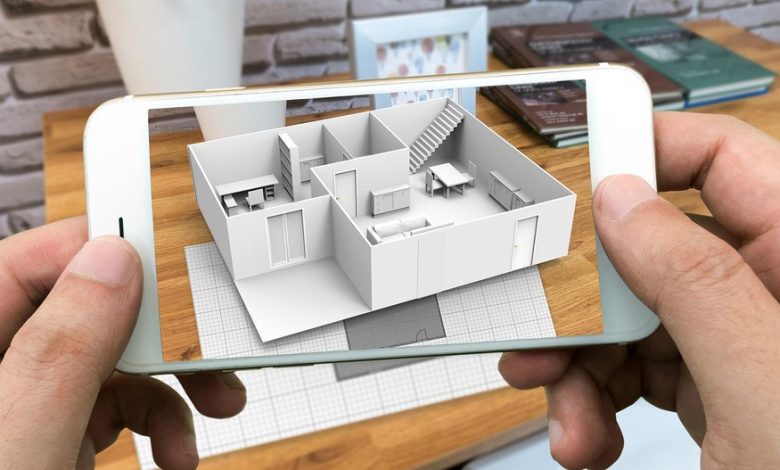
For the last thirty years, arcade games have a source of entertainment. Remember Pong, it was introduced in the 1970s?
In the early days of computers, the graphics were not all that great. Over time the graphics have improved, and now some video games border on photorealism.
There is now a new technology called Augmented Reality. The line between what is real and what is computer generated has become blurred. Augmented reality changes the way its users view the world.
You are driving down the street wearing a pair of augmented reality glasses. In your field of view will appear informative graphics along with audio to coincide with what you are seeing. As you turn your head what you are seeing will be continuously refreshed.
Using the computer-generated information on the real world in real time the incoming video stream is analyzed and downloads extensive details on what you are seeing.
Now that you have an idea of AR let's compare Microsoft's Hololens against Magic Leap One.
Magic Leap One VS. Microsoft Hololens
Magic Leap kept its AR headset a secret during development but has released it for developers to test.
The Magic Leap Oneheadset requires a considerable amount of precision to put on.
Before donning the goggles, you have to remember to sling the small computer that runs the device over your shoulder. The supports in back need to be adjusted to the top of your head.
Hololens doesn't fare much better in this category. There is no over the shoulder computer.
The visor is connected to the headband by a hinge, leaving one to wonder if it is on correctly once the screen is lifted. The crank that adjusts the Microsoft device to your head is preferable to the Magic One's straps.
Where Magic Leap One takes the lead is in the field of vision. Confined right in front of you are the virtual images in a rectangular zone. They are not as limited as Hololens. The vertical field of vision of Magic Leap is nearly double of that of Hololens.
Your first experience with Magic Leap's "demo world" resembles a marine life all around you. As you reach to touch the images, they seemingly change at random.
Hololens, on the other hand, keeps you missing out. When you first put on the Hololens, you see precise visions of ballerinas, weightlifters, and break dancers. When you move to get a closer look, the images are cut off. You get taken out of the experience, the closer you get.
The Winner Is
- Field Of Vision: Magic Leap.
- Comfort: Magic Leap.
- AR Experience: Magic Leap.
- Controls? Controller: Magic Leap.
- Application Support(2018): Hololens.
- Screen: Both had similar resolutions: Tie.
Specifications Magic Leap One
Cost: $2,295.00
CPU: NVDIA® Parker SOC; Denver 2.0 64-bit cores + 4 ARM Cortex A57 64 bit cores (2 A57’s and 1 Denver accessible to applications).
GPU: NVIDIA Pascal™, 256 CUDA cores; Graphic APIs: OpenGL 4.5, Vulkan, OpenGL ES 3.3+ RAM 8 GB
Storage Capacity: 28 GB (actual available storage 95GB)
Power: Built-in rechargeable Lithium-Ion battery, 3 hours continuous use. When connected to an AC outlet 45-watt USB-C Power Delivery (PD) charger.
Connectivity: Bluetooth 4.2, WiFi 802, 11ac/b/g/n, USB-C
Lightwear
Audio Input: Voice (speech text) + real-world audio (ambient)
Audio Output: Onboard Speakers with 3.5mm jack
Controllers Haptics: LRA Haptic Device
Tracking: 6DoF
Trackpad: Touch sensitive
LED: LED (RGB) ring with a diffuser.
Power: Built-in rechargeable Lithium-ion battery. 7.5 hours continuous use, 15-watt USB charger.
Other Inputs: 8-bit resolution Trigger Button, Digital Bumper Button, Digital Home Button.
Microsoft Hololens 1.0 Specs
Price: $3,000.00 per unit.
Display: 2x HD 16.9 Light engines. Automatic pupillary distance calibration. 23M total light points holographic resolution. 25k light points per radian. See-through holographic lenses.
Sensors: Inertial Measurement Unit, 4x environment understanding cameras, mixed reality capture, 4x microphones, ambient light sensor.
Processor: Custom Microsoft Holographic Processing Unit HPU 10, Intel 32-bit architecture.
RAM: 2GB
Storage: 64 GB
Weight: 579 g (12lbs)
Camera: 2MP photos, HD video.
Audio: External speakers, 3.5mm audio jack.
Connectivity: Wi-Fi 80211ac, Bluetooth 4.1 LE, Micro-USB 2.0.
Power: 2-3 hour active use battery life, 2 weeks standby, passive cooling.
OS: Windows 10 with Windows Store Human Understanding: spatial sound, gaze tracking, gesture input, voice support.
Even though Magic Leap One was considered the winner overall to the Microsoft Hololens, having an AR to view the world in virtual reality would be awesome.
In the time when other developers bring their versions of the AR to the marketplace, not only will you see a drop in price but an increase in ownership as well.





Leave a Reply
Thank you for your response.
Please verify that you are not a robot.